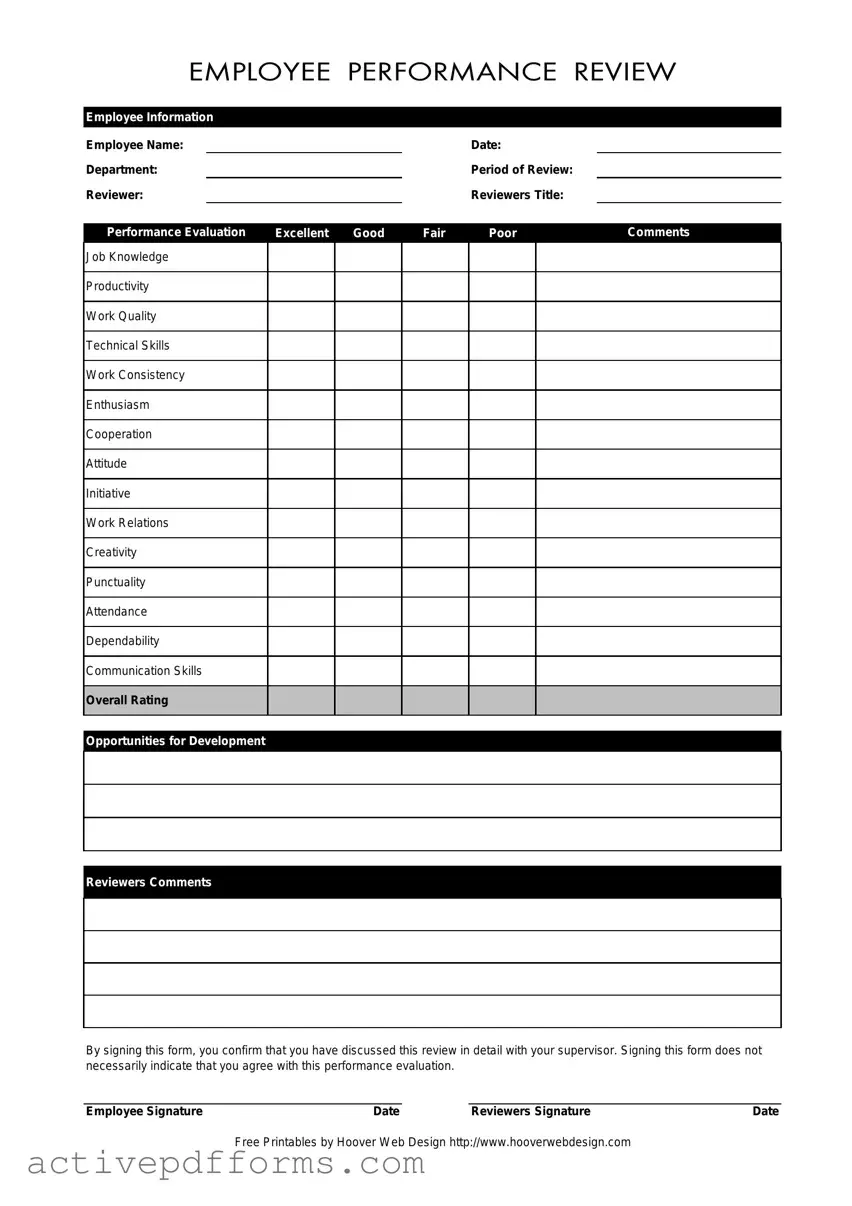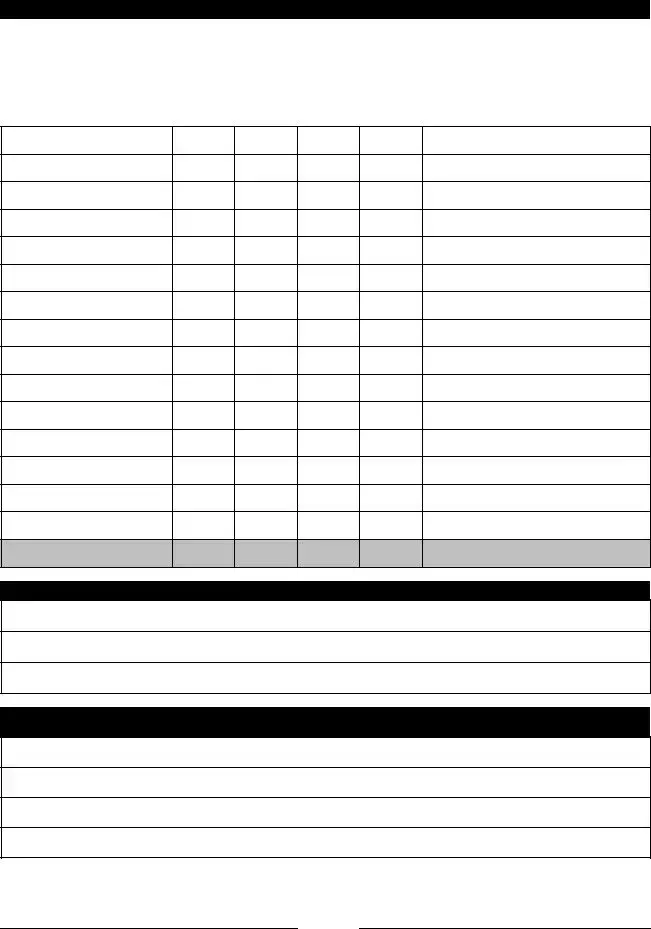At the heart of every organization's performance management system is the Employee Form—a critical document designed to capture a comprehensive evaluation of an employee's performance over a set period. This form meticulously records aspects ranging from basic employee information, such as the employee's name, the date, department, the period under review, to more detailed sections covering performance evaluation across various parameters. These parameters include job knowledge, productivity, work quality, technical skills, and several behavioral traits like enthusiasm, cooperation, attitude, initiative, and many others, each rated on a scale from excellent to poor. Additionally, it provides space for comments, thereby allowing for a qualitative assessment to complement the quantitative ratings. Belonging to a typical performance review process, this form also highlights opportunities for development, inviting reviewers' comments on areas for employee improvement. Importantly, it concludes with a section for both the employee and the reviewer to sign, underscoring the form's role in facilitating a mutual understanding of the performance evaluation. This signature does not imply the employee's agreement with the evaluation but confirms that a detailed discussion has occurred—a nuanced aspect that underscores the form's role in fostering open communication between employees and management. This effort by Hoover Web Design to make such templates freely available underscores the universal relevance of this instrument in managerial practices.

